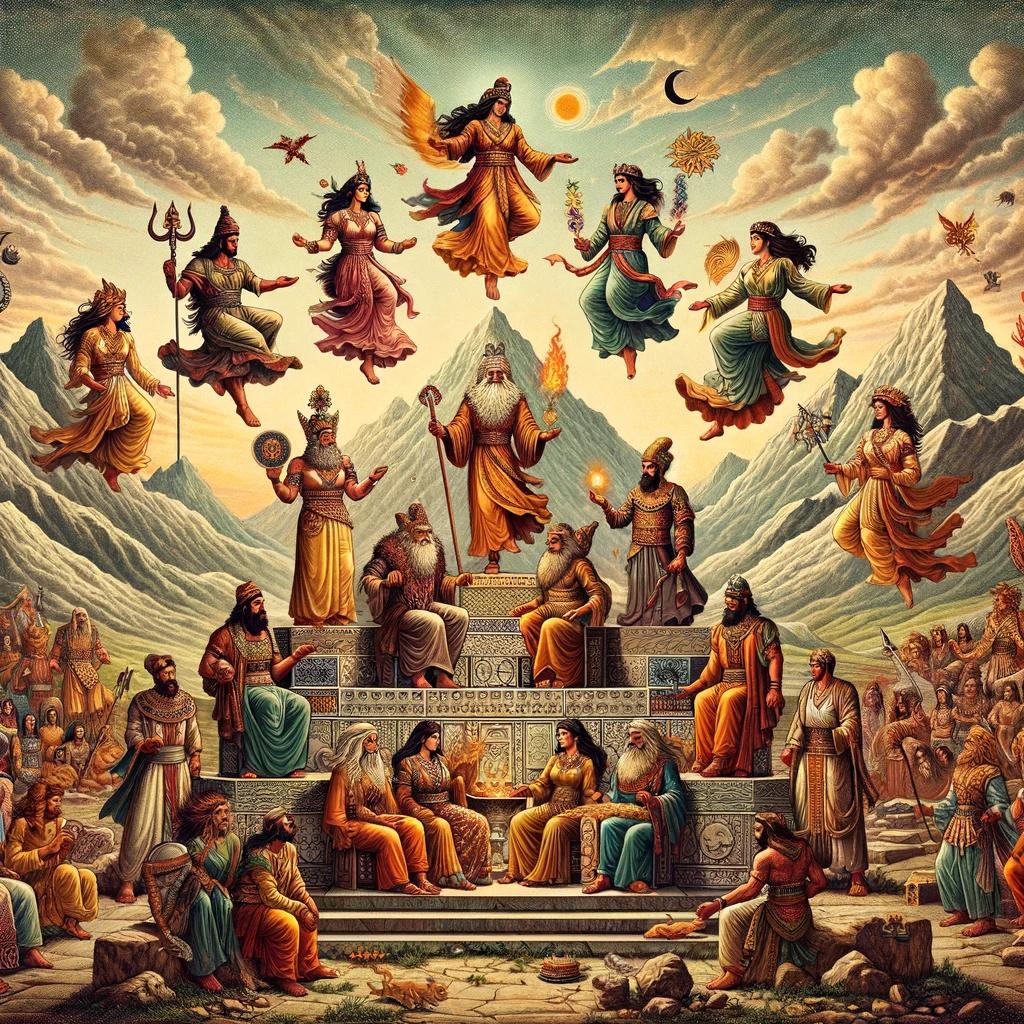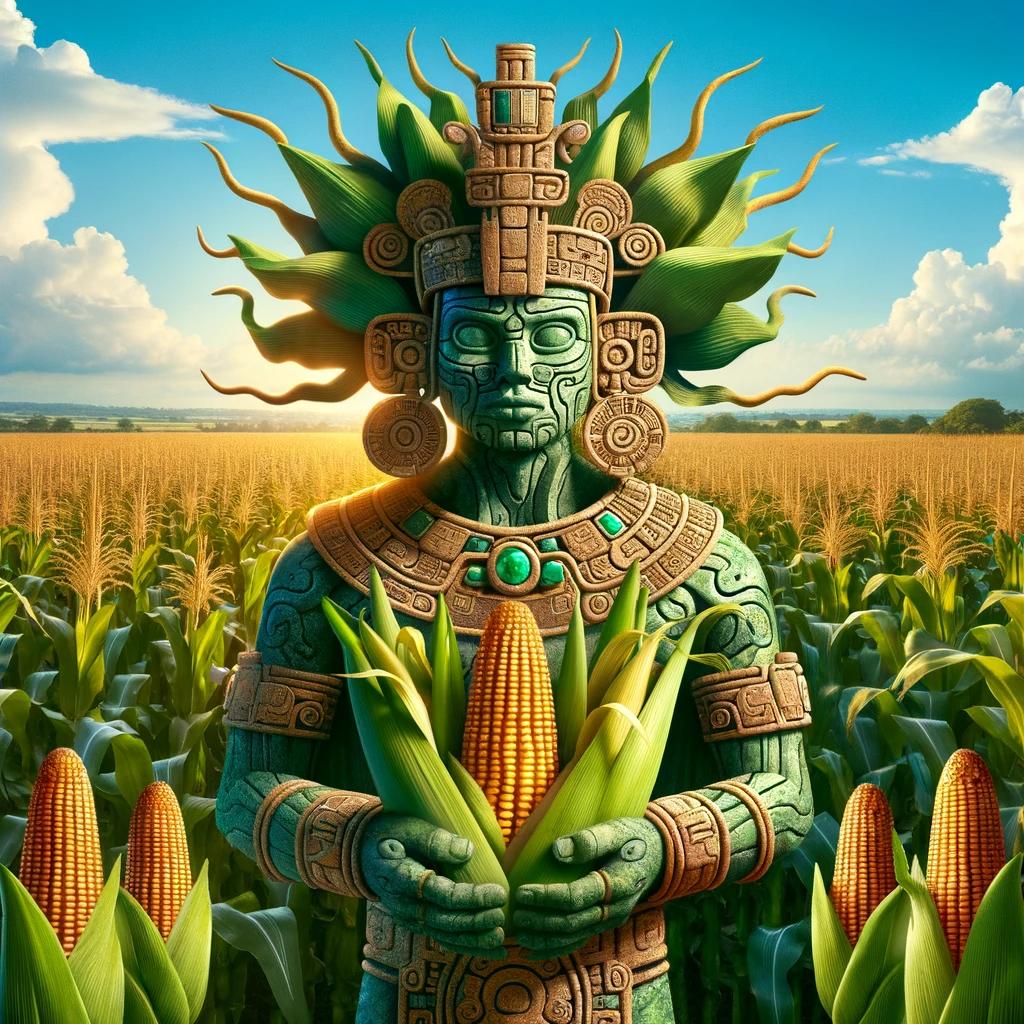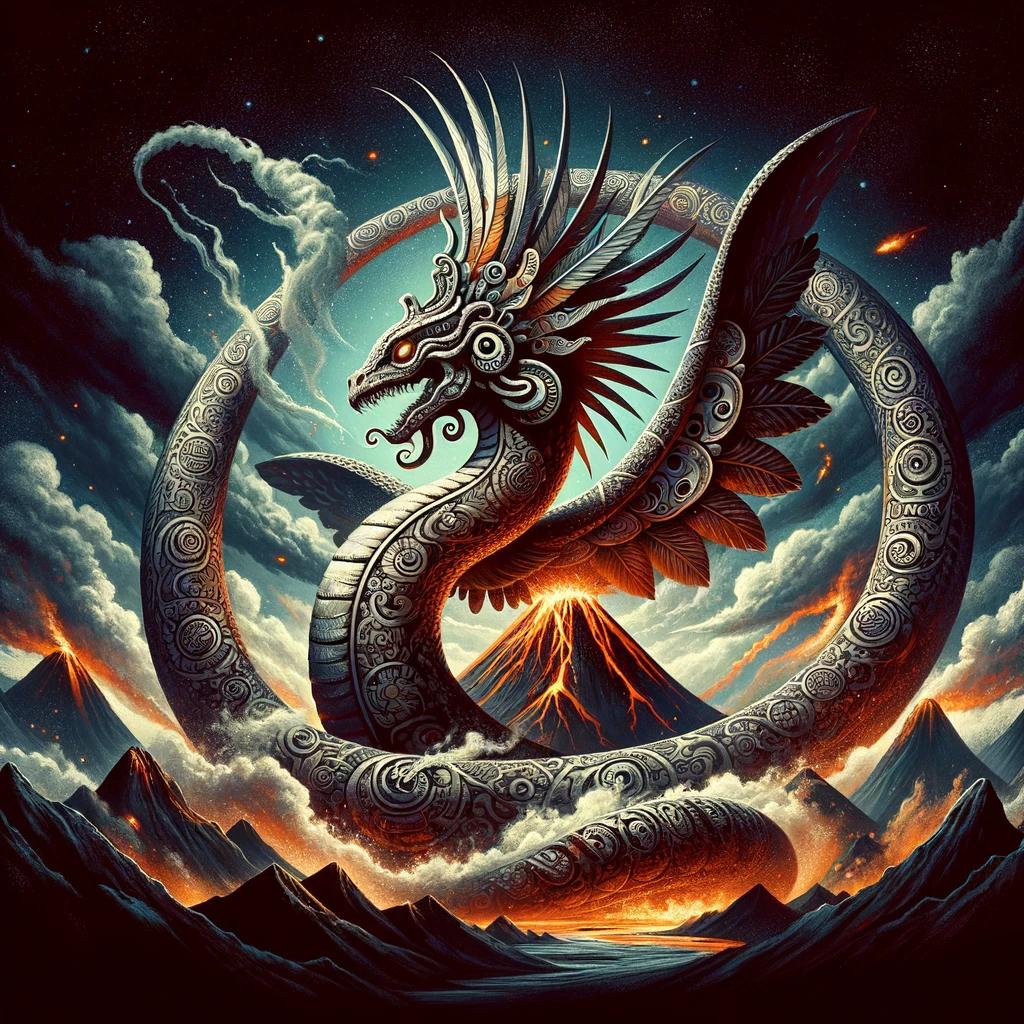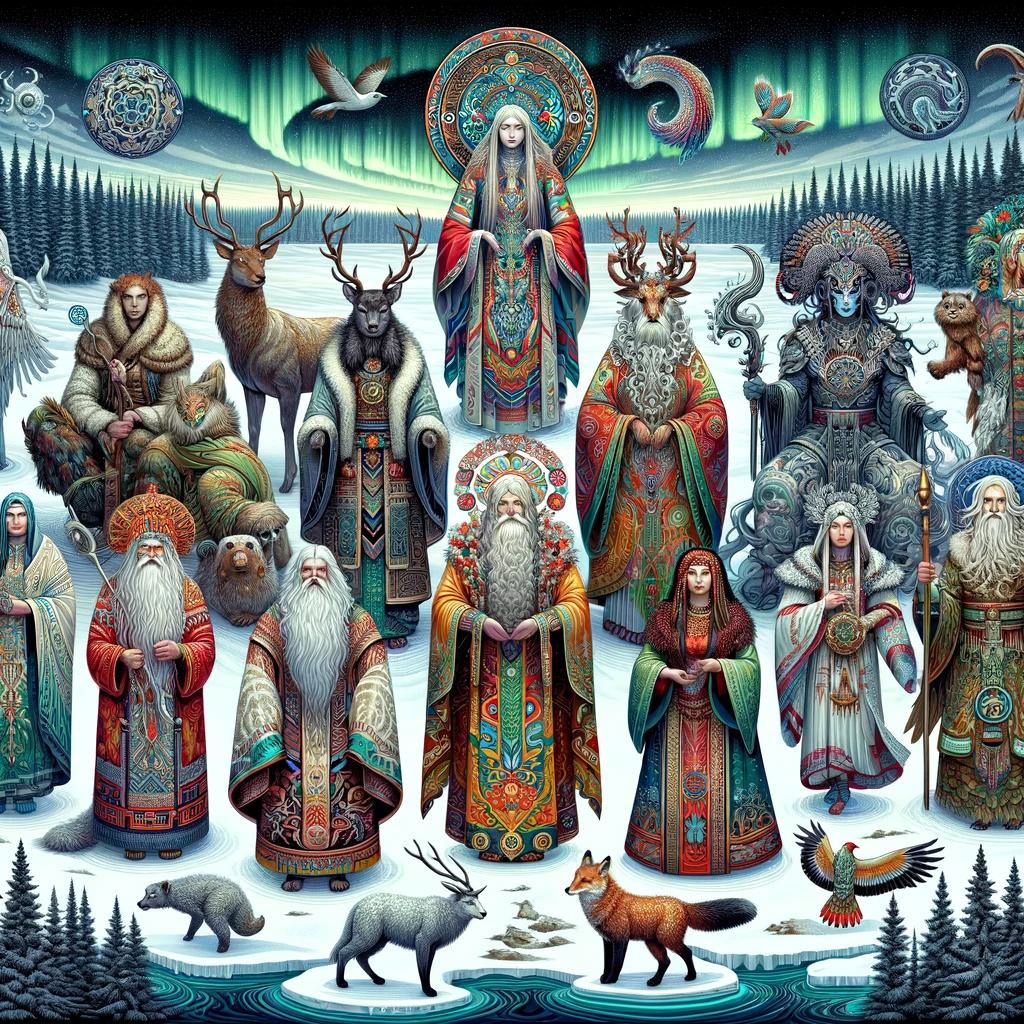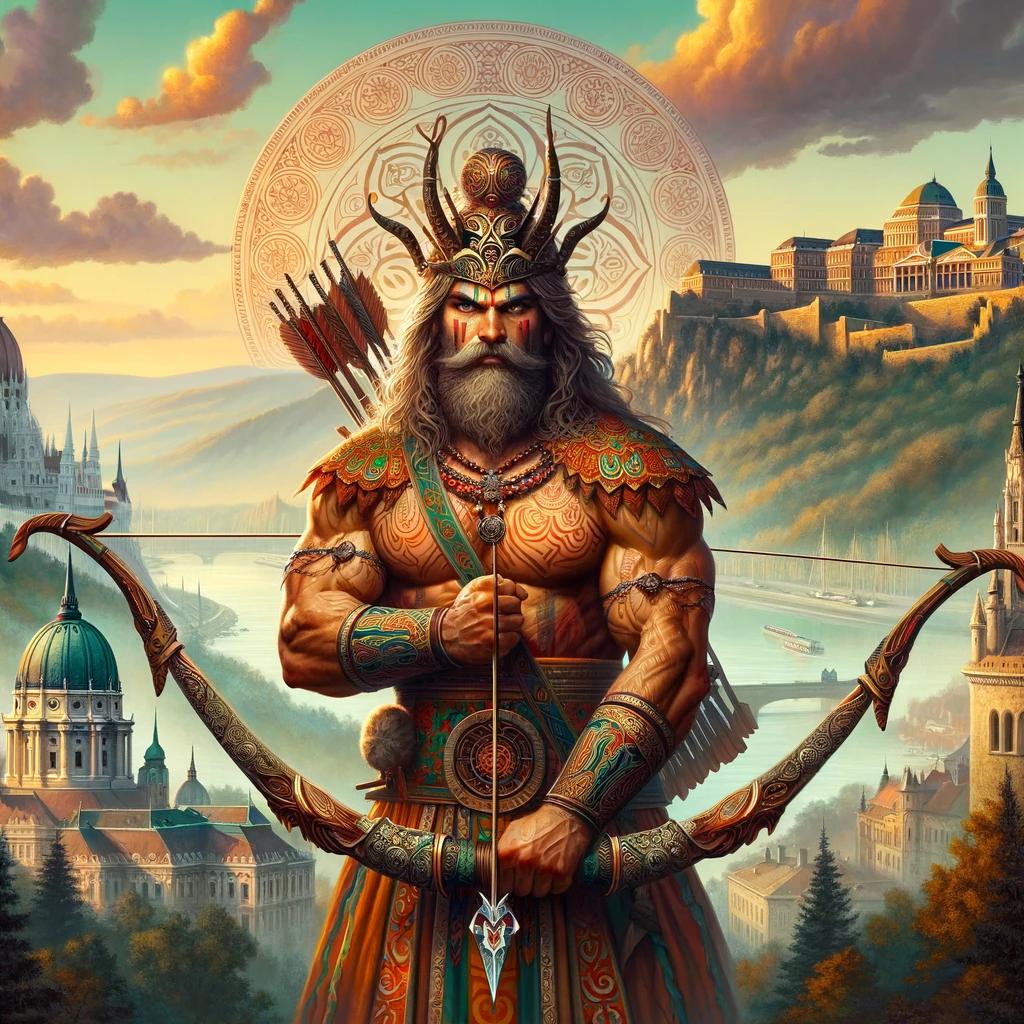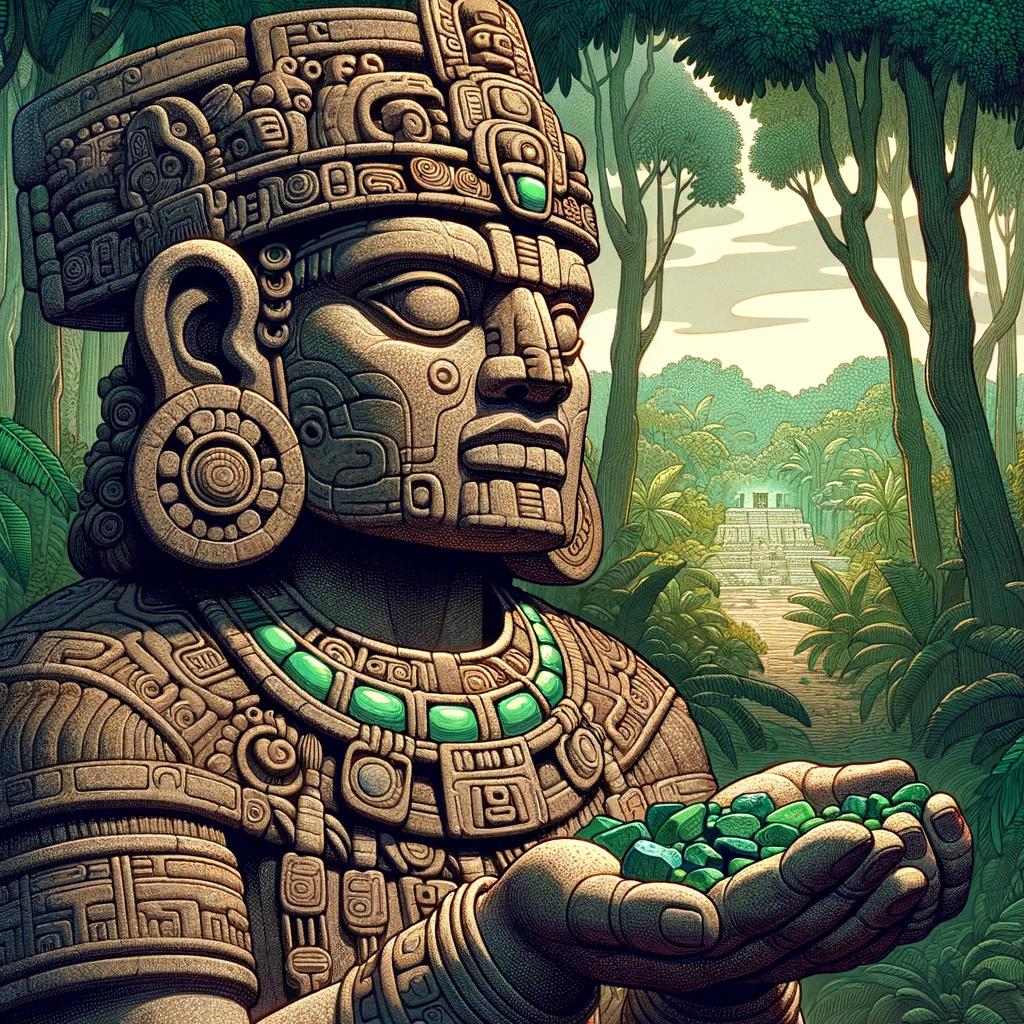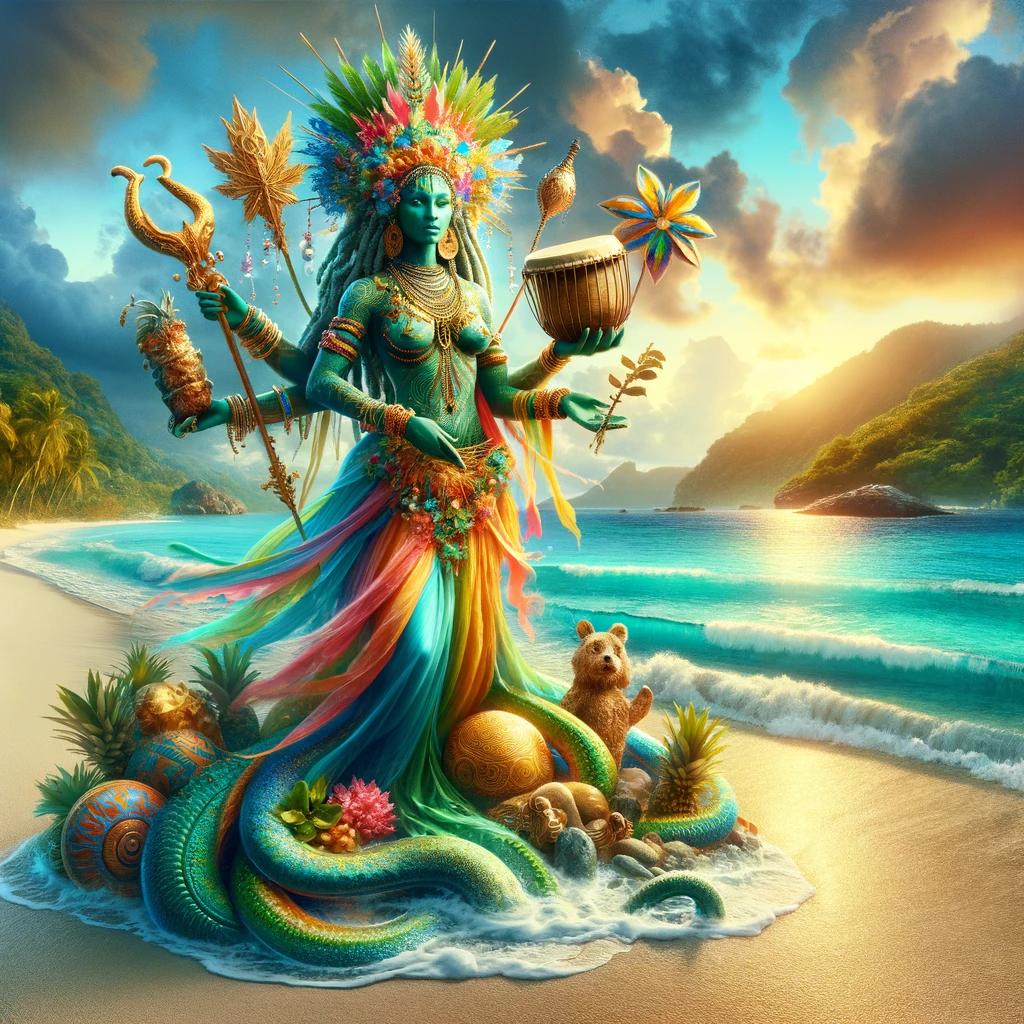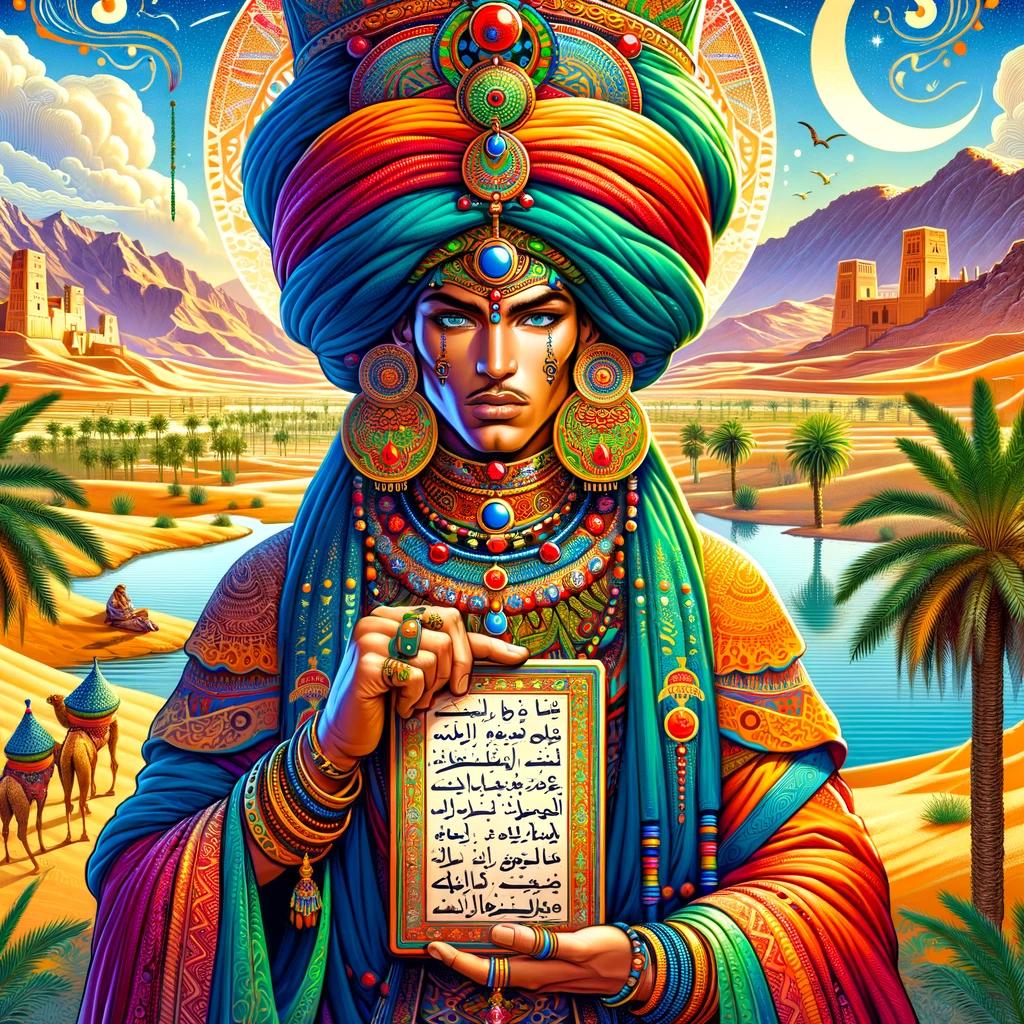Lakota Mythology Gods and Goddesses: Exploring the Divine Beings of Native American Tradition
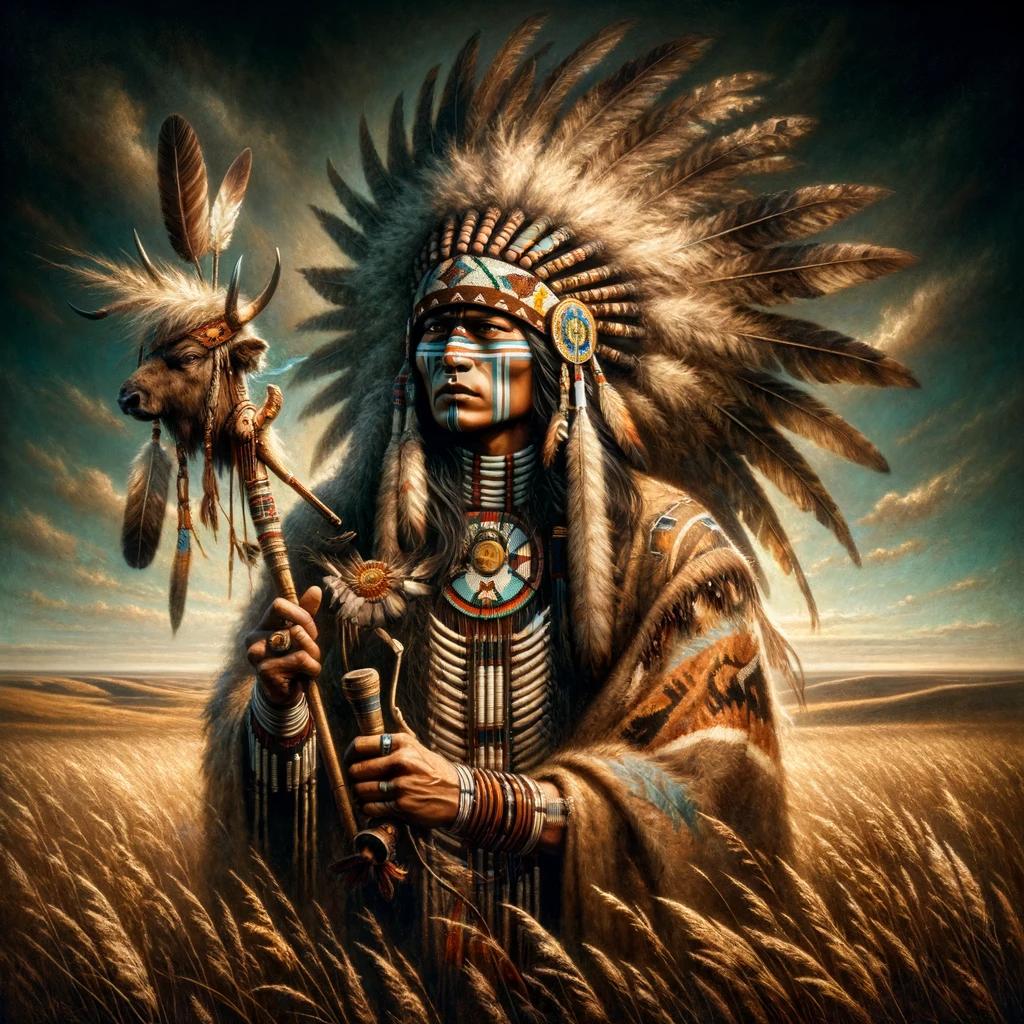
Lakota mythology is a rich tapestry of gods and goddesses from Native American tradition. From the primordial creator spirit Inyan to the spirit of the earth, Maka, and the divine being Wakan Tanka, these deities hold significant importance.
Trickster spirits like Iktomi and Wohe add intrigue, while thunder spirits and the spirit of water bring power and balance. Lakota society reveres these spirits, and their mythology continues to influence contemporary art and literature.
Join us as we delve into the intriguing world of Lakota mythology gods and goddesses.
The Creation Story
The Lakota mythology begins with the fascinating tale of the creation of the universe and all living beings. At the center of this story is Inyan, the primordial creator spirit, who shaped the world as we know it.
Inyan represents the essence of creation and is associated with the color yellow.
Inyan: The Primordial Creator Spirit
Inyan is a powerful deity in Lakota mythology, revered as the ultimate creator of all things. According to legend, Inyan emerged from the void and brought forth the earth, sky, and all living creatures.
As the embodiment of creation, Inyan holds a significant place within Lakota cosmology and is often depicted as a masculine figure associated with the color yellow.
Maka: The Spirit of the Earth
Maka, also known as Maka-akan, is another key figure in the creation story.
As the spirit of the earth, Maka is deeply connected to Inyan, as she was created by him as his lover. Maka represents the physical realm and is considered the nurturing mother of all life.
Her presence ensures the prosperity and balance of the natural world.
Hanwi: The Spirit of the Moon
Hanwi, the spirit of the moon, holds a sacred place in Lakota mythology. Associated with femininity and motherhood, Hanwi is believed to guide the cycle of life and death. She illuminates the night sky, rendering darkness conquerable by light.
Hanwi’s gentle radiance serves as a symbol of hope and stability in the Lakota belief system.
Anpo: The Spirit of the Dawn
Anpo, the spirit of the dawn, marks the beginning of each new day. With two faces, one golden and one silver, Anpo embodies the transition from darkness to light. This duality represents the eternal cycle of life, reminding the Lakota people of the inseparable connection between day and night.
Anpo’s presence brings the promise of a fresh start and the opportunity for growth.
The Divine Beings
The Lakota mythology is home to a diverse pantheon of divine beings, each holding their unique significance in Native American tradition. Let’s delve into the world of these revered deities.
Wakan Tanka: The Great Spirit or Great Spirits
At the heart of Lakota mythology is Wakan Tanka, the Great Spirit or Great Spirits.
Revered as the ultimate force in the Universe, Wakan Tanka embodies the sacredness and interconnectedness of all things. It is believed that Wakan Tanka is present in every aspect of nature, guiding and influencing the lives of the Lakota people.
Skan: The Spirit of Movement in the Universe
Skan is the embodiment of dynamic energy, the spirit of movement in the universe. This divine being is associated with the color blue and represents the constant flow and change found in the natural world.
Skan is believed to bring harmony and balance to the cosmos, ensuring the cyclical progression of life.
Untunktahe: The Spirit of Water
Untunktahe holds immense significance in Lakota mythology as the spirit of water. Revered as a life-giving force, Untunktahe ensures the balance and purity of water sources. It is believed that proper respect for this divine being is necessary for the well-being and sustenance of the Lakota people.
Kssa: The Spirit of Knowledge and Wisdom
Kssa, the spirit of knowledge and wisdom, holds a revered position in Lakota mythology. It is credited as the inventor of language, bestowing the gift of communication upon humanity. Kssa’s guidance and teachings are sought after, symbolizing the importance of wisdom and intellectual growth in Lakota culture.
Trickster Spirits
Trickster spirits play a significant role in Lakota mythology as mischievous and unpredictable beings. They challenge societal norms and often bring humor and lessons through their actions. In this section, we will explore two prominent trickster spirits in Lakota mythology: Iktomi and Wohe.
Iktomi: The Trickster Spider Spirit
Iktomi, known as the trickster spider spirit, is a complex and paradoxical figure in Lakota mythology. He possesses both cunning and foolishness, often using his wit to play tricks on both humans and other deities.
Iktomi is depicted as a spider or a half-spider half-human figure, adapting his appearance to suit his intentions. While his pranks can be amusing, they also carry deep philosophical meanings and teachings about the balance between chaos and order in life.
According to Lakota mythology, Iktomi is responsible for weaving the web of life, symbolizing the interconnectedness of all things. He challenges individuals to think critically and learn from their experiences, reminding them that wisdom can be found in unexpected places.
The tales of Iktomi serve as cautionary tales, urging people to be mindful of their actions and consequences.
Wohe: The Spirit of Peace and Harmony
In contrast to the mischievous nature of Iktomi, Wohe embodies the spirit of peace and harmony in Lakota mythology. She is a gentle and nurturing deity who promotes unity and balance among beings.
Wohe is often portrayed as a young woman adorned with feathers, symbolizing her connection to the spiritual realm.
As the spirit of peace, Wohe encourages cooperation and understanding among the Lakota people.
Her presence brings tranquility and a sense of serenity to individuals and communities. She teaches the importance of resolving conflicts peacefully and respecting the interconnectedness of all living beings.
In Lakota traditions, Wohe is invoked during ceremonies and rituals focused on fostering harmony and restoring balance.
Her teachings remind people of the inherent value of peace and the need to maintain a harmonious relationship with the natural world.
Conclusion
Trickster spirits like Iktomi and beings of peace like Wohe represent the duality of human existence in Lakota mythology. While Iktomi challenges societal norms and imparts wisdom through his mischievous ways, Wohe promotes peace and harmony, fostering unity among individuals.
Understanding the roles of these trickster spirits is essential in comprehending the intricate dynamics within Lakota mythology and the lessons it imparts to its followers in maintaining balance and harmony.
Other Significant Spirits
The Lakota mythology is home to various spirits beyond gods and goddesses.
These spirits have distinct roles in the Native American tradition and hold significant importance in their culture. Let’s explore two such spirits:
Wakinya: Thunder Spirits
Wakinya, also known as thunder spirits, are revered in Lakota mythology. These powerful beings are associated with thunderstorms, symbolizing the magnificent power of nature. The Lakota people hold great respect for the Wakinya and see them as the embodiment of strength and vitality.
Nagi: The Spirit or Essence of a Living Being
In Lakota belief, Nagi refers to the spirit or essence that resides within all living beings. It encompasses the idea of a soul that exists beyond physical existence. The concept of Nagi is closely tied to the interconnectedness of all living things and the belief in the eternal nature of the spirit.
These other significant spirits in Lakota mythology offer a deeper understanding of the diverse spiritual entities that shape their ancient beliefs and cultural practices.
Cultural Beliefs and Practices
Within Lakota society, cultural beliefs and practices play a vital role in shaping their way of life. These beliefs are deeply rooted in the teachings of Lakota mythology gods and goddesses.
Let’s explore two significant aspects: Reverence and Gratitude in Lakota Society and The Role of Lakota Mythology in Native American Tradition.
Reverence and Gratitude in Lakota Society
Reverence is a central value in Lakota society, encompassing respect and honor for all aspects of life. They believe in the interconnectedness of all living beings and the natural world, viewing them as sacred.
Lakota people express their gratitude through rituals, ceremonies, and daily practices that demonstrate their appreciation for the blessings they receive.
These rituals may involve offerings, prayers, and acknowledging the spirits and deities from Lakota mythology.
By expressing reverence and gratitude, they aim to maintain harmony within their community and maintain a balanced relationship with the spiritual realm.
The Role of Lakota Mythology in Native American Tradition
Lakota mythology holds a significant role in Native American tradition, serving as a guiding force for cultural values, customs, and practices.
The myths and stories passed down through generations form the foundation of their identity and provide insights into their understanding of the world.
These myths depict the struggles, triumphs, and lessons learned by the gods and goddesses, serving as moral and ethical guidelines for the Lakota people.
By following the examples set by these divine beings, they aim to lead a life of integrity, humility, and wisdom.
Lakota mythology is woven seamlessly into various aspects of daily life, including language, art, music, dance, and healing practices.
It serves as a reminder of their ancestral heritage and connects them to their spiritual roots.
Overall, cultural beliefs and practices in Lakota society revolve around reverence, gratitude, and the interplay between humans and the divine entities of Lakota mythology.
It is through these practices that they preserve their cultural identity and maintain a harmonious relationship with both the spiritual and natural worlds.
Significance of Lakota Mythology Today
Lakota mythology continues to hold immense significance in contemporary society, with preservation and revival efforts playing a crucial role in keeping the tradition alive. Let’s explore the two main aspects that highlight the importance of Lakota mythology today: preservation and revival efforts, and its influence on contemporary art and literature.
Preservation and Revival Efforts
Preservation and revival initiatives aimed at safeguarding Lakota mythology have gained momentum in recent years. Native American communities, scholars, and cultural organizations are working together to preserve the sacred knowledge and oral traditions associated with Lakota mythology.
By documenting stories, rituals, and ceremonies, these efforts ensure that future generations can connect with their ancestral heritage and maintain a strong cultural identity.
Cultural centers and museums dedicated to Native American history, such as the Smithsonian’s National Museum of the American Indian, actively engage in collecting and showcasing artifacts related to Lakota mythology.
This allows visitors to learn about the gods and goddesses, their roles in Lakota society, and the spiritual significance they hold.
Additionally, educational programs in schools and universities now include the study of Lakota mythology as part of Native American studies curricula.
This integration helps raise awareness and respect for Native American cultures, fostering a greater understanding and appreciation for the rich mythological heritage of the Lakota people.
Influence on Contemporary Art and Literature
Lakota mythology serves as a wellspring of inspiration for contemporary artists and authors.
Its symbolism, profound spiritual themes, and narratives find their way into various art forms, including paintings, sculptures, literature, and music. Artists draw from the mythical beings and stories to create thought-provoking visual representations and engaging narrative works.
In literature, Lakota mythology often serves as a backdrop or source of characters and motifs for modern storytelling. Authors weave the gods and goddesses into their narratives, exploring themes of identity, spirituality, and the interconnectedness of humanity with the natural world.
These literary works bring the ancient tradition to a wider audience, ensuring the continued relevance and appreciation of Lakota mythology.
Through their artistic expressions, contemporary creators bridge the gap between past and present, honoring Lakota mythology while encouraging dialogues about cultural heritage and spirituality.
By engaging with and interpreting these ancient tales, artists and authors nurture a deeper understanding of the profound wisdom embedded within Lakota mythology.
In conclusion, the significance of Lakota mythology today lies in the active preservation and revival efforts undertaken by various communities and cultural organizations.
These initiatives ensure the survival of the tradition for future generations. Furthermore, the influence of Lakota mythology on contemporary art and literature helps to maintain a connection to ancestral roots and sparks meaningful conversations about Native American cultures in the present day.
Lakota mythology presents a diverse pantheon of gods and goddesses that hold significant roles in their traditional beliefs and practices. Let’s recap some of the prominent deities:
Inyan: The Primordial Creator Spirit
Inyan is revered as the primordial creator spirit in Lakota mythology. Associated with the color yellow, Inyan brought existence into being and set the foundation for the universe. As the embodiment of creative power, he holds immense importance in their cosmology.
Maka: The Spirit of the Earth
Maka represents the spirit of the earth and is considered Inyan’s lover. As a nurturing and life-giving deity, Maka embodies the profound connection between the land and its inhabitants. This spiritual bond forms the basis of respect and gratitude within Lakota society.
Hanwi: The Spirit of the Moon
Hanwi personifies the spirit of the moon and is associated with motherhood and femininity. Her gentle radiance illuminates the night and contributes to the cyclical nature of life. Lakota people hold deep reverence for Hanwi and recognize the significance of her feminine energy.
Anpo: The Spirit of the Dawn
Anpo symbolizes the spirit of the dawn and possesses two faces, representing both sunrise and sunset. As the bringer of a new day, Anpo inspires hope and signifies the continuous cycle of rebirth and renewal.
Lakota mythology acknowledges the vital presence of Anpo in each morning’s awakening.
Impact and Legacy of Lakota Mythology
The impact of Lakota mythology extends beyond its traditional context, shaping various aspects of contemporary society. The enduring legacy of these divine tales can be witnessed in numerous forms:
Preservation and Revival Efforts
Lakota communities and cultural organizations continue to preserve and revive the richness of their mythology.
Through storytelling, ceremonies, and educational initiatives, they ensure that future generations embrace and honor their ancestral heritage.
Influence on Contemporary Art and Literature
Lakota mythology serves as a well of inspiration for artists, writers, and filmmakers. Its themes, symbolism, and spiritual motifs find expression in various artistic mediums, contributing to the broader understanding and appreciation of Native American culture.
.











